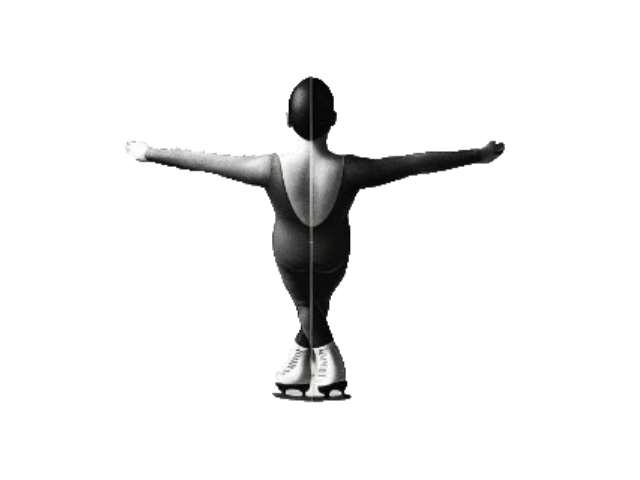Angular momentum is a fundamental concept in physics that describes the rotational motion of objects. It is the rotational equivalent of linear momentum and is conserved in a system where no external torque acts.
What is Angular Momentum?
Angular momentum (L) is a vector quantity, calculated as the product of an object’s moment of inertia (I) and its angular velocity L=Iω
- Moment of inertia (I): A measure of how an object’s mass is distributed relative to the axis of rotation.
- Angular velocity (ω): The rate at which an object rotates about an axis.
Angular momentum (L) is closely related to its linear momentum (p) counterpart, with both describing motion but in different contexts. In linear motion, the change in momentum is given by Δp=FΔt, where F is the applied force and Δt is the time interval. Similarly, in rotational motion, the change in angular momentum is described by ΔL=τΔt, where tau(τ) represents torque, the rotational analog of force. Just as force is responsible for changing an object’s linear momentum, torque is responsible for altering its angular momentum, highlighting the parallel between these two foundational principles in physics.

The moment of inertia (I) of a single point mass is defined as I=mr2, where m is the mass of the object, and r is the perpendicular distance from the axis of rotation to the point mass. This equation quantifies the resistance of the point mass to changes in its rotational motion around the axis.
For objects that are not point masses but are composed of many interacting point masses, the moment of inertia is the sum of the individual moments of inertia of all these point masses. This can be expressed mathematically as:

In the equation above, mi represents the mass of each individual particle, and ri is its distance from the axis of rotation. Each particle contributes to the total moment of inertia based on its mass and its position relative to the axis.


Moment of Inertia for Various Shapes
Here’s a breakdown of the moment of inertia for common shapes, with their corresponding coefficients and equations:
1. Solid Sphere
- Mass Distribution: The mass is uniformly distributed throughout the volume.
- Coefficient: 2/5
- Moment of Inertia Equation: I = 2/5 mr2
- Explanation: The moment of inertia for a solid sphere is lower than other shapes because a significant portion of its mass is closer to the axis of rotation, reducing rotational resistance.
2. Hollow Sphere
- Mass Distribution: The mass is concentrated at the outermost radius, like a thin spherical shell.
- Coefficient: 2/3
- Moment of Inertia Equation: I = 2/3 mr2
- Explanation: Compared to a solid sphere, a hollow sphere has a higher moment of inertia because its mass is distributed farther from the axis of rotation.
3. Solid Cylinder (or Disk)
- Mass Distribution: The mass is evenly distributed throughout the volume of the cylinder.
- Coefficient: 1/2
- Moment of Inertia Equation: I = 1/2 mr2
- Explanation: The moment of inertia for a solid cylinder is less than that of a hollow cylinder because more mass is closer to the axis of rotation.
4. Hollow Cylinder
- Mass Distribution: The mass is concentrated at the maximum possible radius, such as in a cylindrical shell.
- Coefficient: 1
- Moment of Inertia Equation: I = mr2
- Explanation: Since all the mass is as far from the axis as possible, the moment of inertia is maximized compared to other shapes.
How Coefficients Reflect Mass Distribution
The coefficients 2/5, 2/3, 1/2 and 1 represent how the mass is distributed relative to the axis of rotation:
- Smaller coefficients indicate that more mass is closer to the axis, leading to less resistance to rotation.
- Larger coefficients mean more mass is farther from the axis, increasing resistance to rotation.
Physical Implications
Practical Use in Design: Engineers use these equations to design objects with desired rotational properties. For example:
- A hollow cylinder (e.g., a flywheel) has a high moment of inertia, making it effective for energy storage.
- A solid sphere (e.g., a ball) rotates more easily, making it suitable for applications requiring minimal resistance.
Energy Considerations: The rotational kinetic energy (Krot) of an object is given by:
Krot = ½ I𝜔2
Where (𝜔) is the angular velocity. Objects with higher moments of inertia (I) store more rotational energy for the same angular velocity.
Deriving Angular Momentum L=mvr: The Connection Between Linear and Rotational Motion

Angular momentum (L) quantifies the rotational equivalent of linear momentum and is a conserved quantity in rotational dynamics. When a point mass lands on or leaves a rotating object at a radius r from its center, it interacts with the object’s angular momentum. To derive the equation L=mvr, we begin with the general formula for angular momentum:
L=Iω
Here, I is the moment of inertia of the system, and ω is the angular velocity. If a point mass lands on the rotating object, the mass contributes to the system’s angular momentum. For a point mass, the moment of inertia is expressed as:
I = mr2
where mmm is the mass of the point particle and r is its distance from the axis of rotation. Substituting I = mr2 into the angular momentum equation gives:
L = (mr2)𝜔
Next, we relate angular velocity (ω) to the linear velocity (v) of the point mass. The relationship between angular and linear velocity is:
v=rω
Rearranging for ω yields:
ω=v/r
Substituting ω=v/r into the angular momentum equation L = (mr2)𝜔 results in:
L = (mr2)v/r
Simplifying, we arrive at:
L=mvr
This equation shows that the angular momentum of a point mass at a radius r is directly proportional to its mass (m), linear velocity (v), and the radial distance (r).
Application: Gaining or Losing Angular Momentum
When a point mass lands on a rotating object, it adds angular momentum equal to L=mvr. Conversely, if the point mass leaves the object, it takes away angular momentum, conserving the system’s total angular momentum. This principle is essential in understanding scenarios like a spinning ice skater pulling their arms in (decreasing r, increasing ω) or objects being ejected from rotating systems like a centrifuge.
The derivation and application of L=mvr highlight the intrinsic relationship between linear and rotational motion, showcasing the elegance of angular momentum conservation in physics.
Principle of Conservation of Angular Momentum
The conservation of angular momentum states that if no external torque acts on a system, the total angular momentum remains constant. This principle is crucial in understanding rotational dynamics in various contexts.
In practical terms, this means the moment of inertia of a complex object depends on both its mass distribution and the axis of rotation. For example, a solid disk and a ring of the same mass and radius have different moments of inertia because their mass is distributed differently. The ring, with all its mass concentrated further from the axis, has a higher moment of inertia than the disk, where mass is spread closer to the axis.
This principle underpins the rotational behavior of extended bodies and is crucial in understanding systems like rotating machinery, celestial bodies, and even human motion during activities like gymnastics or figure skating. It shows how the rotational dynamics of an object emerge from the collective contributions of its constituent point masses.
Unique Examples of Angular Momentum in Action
1. The Spinning Ice Skater

An ice skater begins a spin with their arms extended, increasing their moment of inertia and reducing their angular velocity. When they pull their arms in, the moment of inertia decreases, and the angular velocity increases to conserve angular momentum.
2. A Diver’s Somersault
A diver in the air tucks their body to reduce the moment of inertia, enabling faster rotations during a somersault. Extending their body before entering the water slows the rotation, demonstrating angular momentum conservation.
3. Spinning Planets
Earth’s rotation around its axis and its orbit around the sun are examples of rotational motion conservation on a cosmic scale. Changes in Earth’s rotation speed (due to redistribution of mass) demonstrate this principle.
Earth’s Rotation and Angular Momentum Conservation
- Angular Momentum Conservation Principle: In a closed system with no external torque, angular momentum remains constant. Earth, as part of the solar system, exhibits this principle in its rotation around its axis and its orbit around the Sun.
- Earth’s Rotation Around Its Axis: Earth’s rotation speed can change due to redistributions of mass, such as melting glaciers, ocean currents, or seismic activity. These changes slightly affect Earth’s moment of inertia (I) and angular velocity (ω), since:
L=Iω
- For angular momentum (L) to remain conserved, if I increases (e.g., mass moving away from the axis), ω (rotation speed) decreases, and vice versa.
- Discover how NASA explains the impact of this massive construction in China on Earth’s rotation. Learn more at: Economic Times Article
Earth’s Orbit Around the Sun
- Earth’s orbital angular momentum around the Sun is also conserved. This is due to the absence of significant external torques acting on the Earth-Sun system. Changes in Earth’s orbital speed and distance (as described by Kepler’s laws) are consistent with this principle:
Lorbit = mvr
- Where m is Earth’s mass, v is its orbital velocity, and r is the distance from the Sun. As Earth moves closer to or farther from the Sun (slightly elliptical orbit), its orbital speed adjusts to conserve angular momentum.
Examples of Observable Changes
- Day Length Variations: Redistribution of Earth’s mass, such as melting glaciers, shifts Earth’s moment of inertia and causes tiny changes in the length of a day.
- Seismic Events: Earthquakes can slightly alter Earth’s shape and distribution of mass, impacting its rotation speed.
- Tidal Friction: Over long periods, interactions with the Moon and Sun cause Earth’s rotation to slow down (lengthening days) while the Moon’s orbit gradually expands, conserving angular momentum in the Earth-Moon system.
Applications of Angular Momentum
- Astronomy: Angular momentum explains the behavior of celestial bodies, such as the collapse of gas clouds into stars and the rotation of galaxies.
- Sports: Activities like figure skating, gymnastics, and diving heavily rely on angular momentum for execution and performance.
- Engineering: Flywheels in mechanical systems store angular momentum to stabilize and regulate motion.
Interactive Experiment Idea
- Take a spinning office chair and sit on it holding weights in each hand. Spin yourself by pushing off lightly with your feet. Pull your arms in to spin faster and extend them to slow down. This simple activity demonstrates how angular momentum conservation works.
Conclusion
Angular momentum is not just an abstract concept—it’s present in everyday activities, natural phenomena, and technological applications. By understanding its principles, we gain insight into the rotational dynamics that govern our world and beyond.

